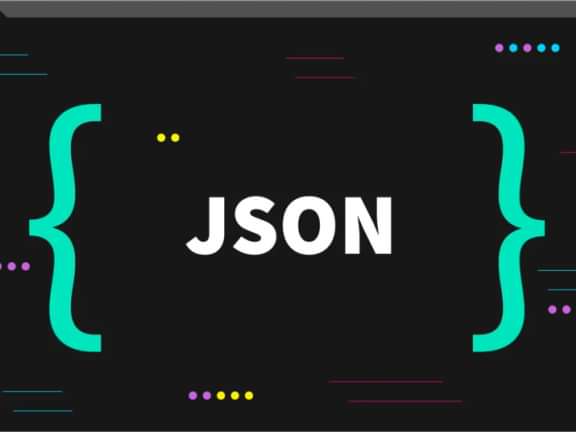Introduction to TensorFlow
Get started with TensorFlow and master machine learning.

Tensorflow is a powerful tool
TensorFlow is a powerful open-source library for building and training machine learning models. It was developed by Google and has become one of the most widely used machine learning libraries in the world. TensorFlow is known for its ease of use, flexibility, and scalability, making it a go-to choice for researchers and developers working in the field of machine learning. With TensorFlow, you can create and train models for a wide range of applications, including image and speech recognition, natural language processing, and many others. In this article, we'll provide an overview of the basics of TensorFlow, including its key features and how to get started using the library.
Installing TensorFlow
To get started with TensorFlow, you need to install the library on your machine. TensorFlow supports a wide range of operating systems, including Linux, MacOS, and Windows. Before you begin the installation process, make sure your machine meets the following requirements:
- Python 3.6-3.8
- pip package manager
- Virtualenv
Once you have these prerequisites installed, you can proceed with installing TensorFlow.
The simplest way to install TensorFlow is to use pip, the Python package manager. Open a terminal or command prompt and run the following command to install TensorFlow:
pip install tensorflow
If you want to install a specific version of TensorFlow, you can specify the version number:
pip install tensorflow==2.4.0
t's also possible to install TensorFlow with GPU support, which can greatly speed up the training of large models. To install TensorFlow with GPU support, you'll need a compatible NVIDIA GPU and the CUDA toolkit installed on your machine. Once you have these prerequisites, you can run the following command to install TensorFlow with GPU support:
pip install tensorflow-gpu
If you're using a virtual environment, make sure to activate it before running these commands.
After the installation is complete, you can verify that TensorFlow is installed correctly by opening a Python shell and running the following code:
import tensorflow as tf
print(tf.__version__)This should output the version number of TensorFlow that you just installed.
In summary, installing TensorFlow is a straightforward process that can be accomplished with just a few commands. Once you have TensorFlow installed, you're ready to start building and training machine learning models.
Setting up a tensorflow environment
After you have installed TensorFlow, the next step is to set up a development environment for working with the library. This typically involves creating a new Python project and importing the TensorFlow library. Here's how to get started:
- Create a new project directory: Begin by creating a new directory for your TensorFlow project. This can be done using the command line or your operating system's file manager. For example, in Linux or MacOS, you could create a new directory called "my_project".
- Create a virtual environment: To keep your TensorFlow installation separate from other Python libraries on your system, it's a good idea to create a virtual environment for your project. This can be done using the virtualenv package.
- Activate the virtual environment: To start using the virtual environment, you need to activate it.
- Install additional packages (if necessary): Depending on the specific requirements of your project, you may need to install additional Python packages. You can do this using pip, the Python package manager, as shown in the previous section on Installing TensorFlow.
- Import TensorFlow: Finally, you can import the TensorFlow library into your Python project by adding the following line at the beginning of your script:
import tensorflow as tfThis will give you access to all the functions and classes provided by the TensorFlow library.
Here's an example script that sets up a basic TensorFlow environment:
# Create a new project directory
mkdir my_project
# Create a virtual environment
cd my_project
virtualenv my_env
# Activate the virtual environment
source my_env/bin/activate
# Install TensorFlow
pip install tensorflowBy following these steps, you can set up a basic development environment for working with TensorFlow. From here, you can start building and training machine learning models using the library.
Building a simple model
Once you have set up your TensorFlow environment, you're ready to start building machine learning models. One of the simplest types of models you can build is a linear regression model. This involves defining a linear function that predicts an output variable based on one or more input variables. Here's how to build a simple linear regression model in TensorFlow:
- Define the input variables: In this case, we'll use a single input variable x and a single output variable y. These can be defined as TensorFlow placeholders, which allow us to pass in different values at runtime.
x = tf.placeholder(tf.float32)
y = tf.placeholder(tf.float32)2. Define the model parameters: To build a linear regression model, we need to define the slope (m) and y-intercept (b) of the linear function. These can be defined as TensorFlow variables, which are updated during training.
m = tf.Variable(0.0)
b = tf.Variable(0.0)3. Define the linear function: The linear function takes the input variable x and produces an output variable y_pred, which is the predicted value of y.
y_pred = tf.add(tf.multiply(m, x), b)4. Define the loss function: The loss function measures how well the model predicts the output variable y. In this case, we'll use mean squared error (MSE) as the loss function.
loss = tf.reduce_mean(tf.square(y - y_pred))5. Define the optimizer: The optimizer is responsible for updating the model parameters to minimize the loss. In this case, we'll use stochastic gradient descent (SGD) as the optimizer.
optimizer = tf.train.GradientDescentOptimizer(learning_rate=0.01)
train_op = optimizer.minimize(loss)6. Train the model: Finally, we can train the model by repeatedly running the optimizer on a set of input/output pairs. Here's an example script that trains the model on a set of randomly generated input/output pairs:
import numpy as np
# Generate some random data
x_data = np.random.rand(100).astype(np.float32)
y_data = 2.0 * x_data + 1.0
# Build the model
x = tf.placeholder(tf.float32)
y = tf.placeholder(tf.float32)
m = tf.Variable(0.0)
b = tf.Variable(0.0)
y_pred = tf.add(tf.multiply(m, x), b)
loss = tf.reduce_mean(tf.square(y - y_pred))
optimizer = tf.train.GradientDescentOptimizer(learning_rate=0.01)
train_op = optimizer.minimize(loss)
# Train the model
sess = tf.Session()
sess.run(tf.global_variables_initializer())
for i in range(100):
_, loss_val, m_val, b_val = sess.run([train_op, loss, m, b], feed_dict={x: x_data, y: y_data})
if i % 10 == 0:
print("Step {}: loss={}, m={}, b={}".format(i, loss_val, m_val, b_val))This script generates 100 random input/output pairs and trains the linear regression model on these pairs using stochastic gradient descent. During training, the script prints the current values of the loss, slope, and y-intercept every 10 steps.
By following this example, you can get started with building and training simple machine learning models in TensorFlow. From here, you can explore more advanced models and techniques for solving a wide range of machine learning problems.
Ask for help!
In conclusion, TensorFlow is a powerful tool for building and training machine learning models. With its ease of use, flexibility, and scalability, it has become one of the most popular libraries in the field of machine learning. In this article, we've covered the basics of installing TensorFlow, setting up a development environment, and building a simple linear regression model. We hope this provides a solid foundation for you to start exploring the many possibilities of machine learning with TensorFlow. If you need further help or guidance with TensorFlow, don't hesitate to reach out to us at BrillianceNW. Our team of experts is here to help you succeed with machine learning and other cutting-edge technologies.
Continue reading.
The Element API plugin is a very powerful tool that you can use for quickly exposing your data structures to an external source.
Read moreA brief introduction to consensus mechanisms and why proof of stake is the right move for Ethereum.
Read moreLet's chat about your project
Portland, OR 97215



